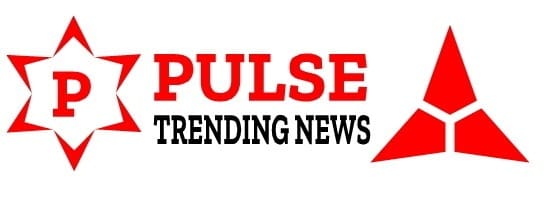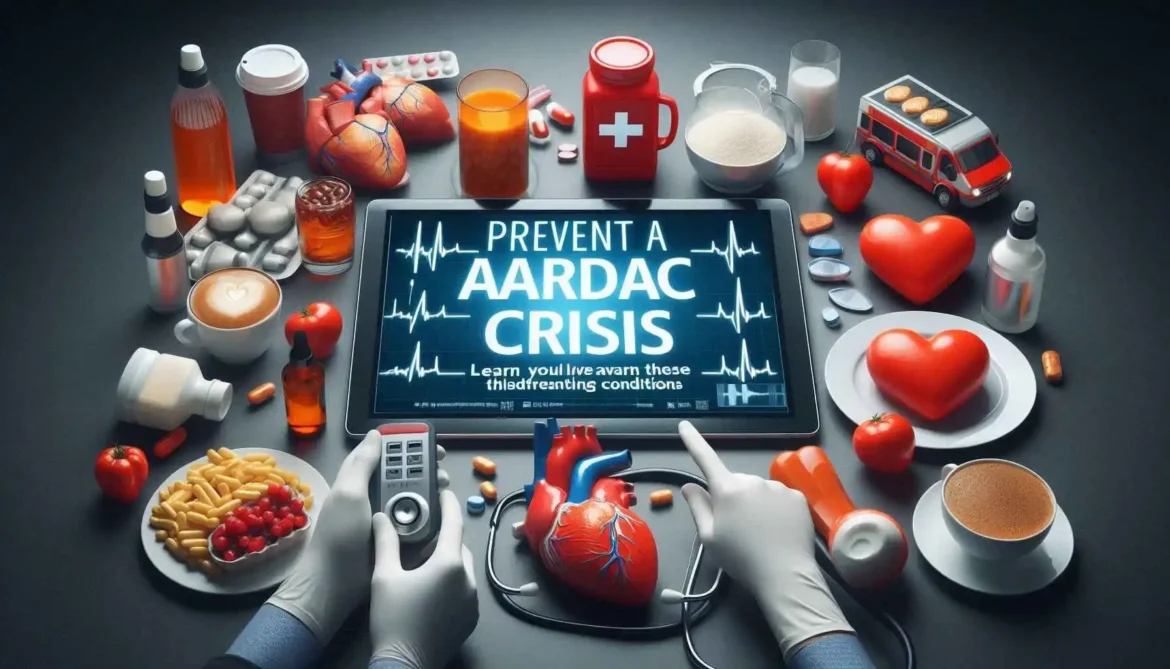What it is: Thrombosis is the formation of a blood clot (thrombus) inside a blood vessel, obstructing the flow of blood. In the context of the “Deadly Ds,” this typically refers to massive clots or clots in critical locations that acutely compromise circulation and lead to rapid collapse or cardiac arrest. The most common examples are massive pulmonary embolism (PE), acute myocardial infarction (MI), and acute ischemic stroke, although massive peripheral artery thrombosis can also occur.
How it happens: Clots form due to damage to blood vessel walls, sluggish blood flow, or hypercoagulability (blood that clots too easily). When a clot forms in or travels to a critical vessel (like a major coronary artery, a large pulmonary artery, or a cerebral artery), it blocks blood supply to vital tissue, leading to tissue damage (infarction) or organ failure. A massive PE blocks blood flow from the heart to the lungs, causing immediate strain on the heart and lack of oxygenation. A large MI blocks blood flow to heart muscle, causing the heart to fail. A large stroke blocks flow to brain tissue.
Common Types of Life-Threatening Thrombosis We Encounter:
- Massive Pulmonary Embolism (PE): Large clot(s) lodge in the pulmonary arteries, blocking blood flow to the lungs. Often originates as a Deep Vein Thrombosis (DVT) in the legs.
- Acute Myocardial Infarction (MI): Clot in a coronary artery blocking blood supply to heart muscle (“heart attack”). A large anterior MI can cause cardiogenic shock or cardiac arrest.
- Acute Ischemic Stroke: Clot in a cerebral artery blocking blood supply to brain tissue. A large vessel occlusion can cause rapid severe neurological deficit or loss of consciousness.
Key Symptoms We Identify (Varies by location):
- Massive PE: Sudden severe shortness of breath, chest pain (often pleuritic), rapid heart rate, low blood pressure, signs of right heart strain (jugular venous distension), sudden collapse.
- Acute MI: Severe chest pain (pressure, tightness, squeezing), radiation to arm/jaw/back, shortness of breath, sweating, nausea, weakness, cardiac arrest (especially ventricular fibrillation).
- Acute Stroke: Sudden onset of facial droop, arm weakness, speech difficulty (FAST signs). Severe stroke can cause sudden unresponsiveness or coma.
- General for severe thrombosis: Sudden onset of crushing pain, loss of function in the affected area, rapid onset of shock or cardiac arrest.
Emergency Treatment We Administer:
- Immediate Recognition: Based on clinical presentation and risk factors. ECG for MI, rapid neurological exam for stroke, clinical suspicion for PE. Imaging (CT scan, V/Q scan) or lab tests (D-dimer) confirm, but treatment may be initiated based on high suspicion in unstable patients.
- Supportive Care: Oxygen, pain control, managing blood pressure and heart rate.
- Reperfusion Therapy: The goal is to restore blood flow.
- Thrombolytic Therapy (“Clot Busters”): Medications (like tPA) that dissolve the clot. Used in massive PE, STEMI (if percutaneous coronary intervention not rapidly available), and acute ischemic stroke (within strict time windows).
- Mechanical Thrombectomy: Physically removing the clot using catheters, particularly common for large vessel strokes and increasingly used for PE and MI in specialized centers.
- Percutaneous Coronary Intervention (PCI): Angioplasty and stenting to open blocked coronary arteries in MI.
- Anticoagulation: Medications (like heparin) to prevent further clot formation.
Comparing the Deadly Ds
It is helpful to see the distinctions and similarities between these conditions at a glance. While all are life-threatening, the location of the problem and the initial definitive intervention differ significantly.
| Feature | Tension Pneumothorax | Cardiac Tamponade | Toxins | Thrombosis (Massive) |
| What is Wrong | Air trapped in chest, compressing lung/heart | Fluid compressing heart | Substance causing system failure | Clot blocking vital blood flow |
| Primary System | Respiratory/Circulatory (Mechanical) | Circulatory (Mechanical) | Multi-system (Chemical/Pharmacological) | Circulatory (Occlusive) |
| Key Clinical Sign | Unilateral absent sounds, Tracheal shift (late), JVD | Beck’s Triad (Hypotension, JVD, Muffled Heart Sounds), Pulsus Paradoxus | Altered mental status, Resp depression, Specific signs based on toxin | Chest pain/SOB/Neuro deficit, Shock, Signs of specific organ failure |
| Immediate Life-Saving Intervention | Needle Decompression | Pericardiocentesis | Supportive Care, Antidote (if available) | Reperfusion (Thrombolysis, Thrombectomy) |
| Definitive Step | Chest Tube Insertion | Pericardial Drainage / Window | Continued Supportive Care, Elimination | Anticoagulation, Treating underlying cause |
Conclusion
Recognizing the “Deadly Ds” is a core skill in emergency and critical care. Tension Pneumothorax, Cardiac Tamponade, Toxins, and Thrombosis represent conditions where swift identification and targeted intervention are absolutely critical. While their underlying causes and specific treatments differ, they share the common thread of causing rapid patient deterioration and requiring immediate, decisive action to reverse the life-threatening process. By understanding the key features of each, we are better equipped to rapidly assess crashing patients, initiate the correct life-saving protocols, and give individuals the best chance for survival and recovery. These conditions remind us of the importance of vigilance, rapid assessment, and preparedness in the face of acute medical emergencies.
FAQs
General
- Q: Can tension pneumothorax be treated naturally or with lifestyle changes?
A: No, tension pneumothorax is a life-threatening emergency that requires immediate medical intervention, typically needle decompression or chest tube insertion. However, maintaining good lung health through lifestyle choices like avoiding smoking may reduce risk of lung problems. - Q: Is cardiac tamponade manageable with natural remedies?
A: Cardiac tamponade is also an emergency condition needing prompt medical drainage. Lifestyle changes can support heart health but cannot treat tamponade on their own. - Q: How do lifestyle changes help prevent thrombosis?
A: Lifestyle changes such as regular exercise, a balanced diet rich in antioxidants, maintaining a healthy weight, and avoiding prolonged immobility can significantly reduce the risk of thrombosis (blood clots). - Q: Can natural remedies help detoxify the body from toxins effectively?
A: Some natural remedies and lifestyle habits like hydration, eating antioxidant-rich foods, and avoiding exposure to harmful chemicals can support the body’s detoxification systems but cannot replace medical treatment for severe poisoning.
Tension Pneumothorax
- Q: Are there any natural ways to prevent tension pneumothorax?
A: Preventing lung injury by not smoking, avoiding high-risk activities, and managing lung diseases like COPD may reduce risk. - Q: Can breathing exercises help individuals prone to pneumothorax?
A: Breathing exercises may improve respiratory function but do not prevent pneumothorax. Caution is advised if lung disease is present. - Q: How important is smoking cessation in lung health?
A: Very important—smoking damages lung tissue, increases risk of lung diseases, and can contribute to spontaneous pneumothorax.
Cardiac Tamponade
- Q: Can diet influence cardiac tamponade risk?
A: Cardiac tamponade itself is often due to trauma, infection, or cancer; diet can’t prevent it. However, a heart-healthy diet supports overall cardiovascular health. - Q: What lifestyle habits promote better heart health post-cardiac tamponade treatment?
A: Heart-healthy diet, regular moderate exercise, stress management, and avoiding tobacco help recovery and prevent heart diseases. - Q: Are herbal anti-inflammatory remedies helpful after medical treatment of tamponade?
A: Some anti-inflammatory herbs (e.g., turmeric) may support healing but should be used with doctor’s approval.
Detoxification and Toxins
- Q: What natural foods help the body detoxify toxins?
A: Foods like garlic, green tea, berries, cruciferous vegetables, and leafy greens support liver detoxification enzymes. - Q: How much water should you drink daily for effective detox?
A: Aim for 8-10 glasses of water daily to support kidney function and toxin elimination. - Q: Can sauna or sweat therapy help remove toxins?
A: Sweating through exercise or sauna may help excrete some toxins via skin but is only supportive, not primary detox. - Q: Are there risks with using natural detox supplements?
A: Some supplements can interact with medications or harm organs. Always consult a healthcare provider.
Thrombosis
- Q: Which lifestyle changes reduce the risk of deep vein thrombosis (DVT)?
A: Regular physical activity, avoiding long periods of immobility, hydration, and wearing compression stockings when needed help reduce DVT risk. - Q: Can diet influence blood clot risk?
A: Yes, a diet low in saturated fats and rich in omega-3 fatty acids, fruits, and vegetables supports healthy blood flow. - Q: Are natural blood thinners safe alternatives to medications?
A: Natural blood thinners like turmeric, ginger, or garlic may have mild effects but should never replace prescribed anticoagulants without medical advice. - Q: How does weight management affect thrombosis risk?
A: Maintaining a healthy weight reduces blood clot risk by improving circulation and reducing inflammation.
Combined & General FAQs
- Q: Can stress management impact these conditions?
A: Yes, chronic stress worsens inflammation and cardiovascular health; mindfulness, meditation, and yoga can be beneficial. - Q: How does sleep affect heart and lung health?
A: Good sleep supports healing, immune function, and cardiovascular health. - Q: Are supplements like omega-3 fatty acids helpful?
A: Omega-3s may reduce inflammation and improve blood flow but should complement other treatments. - Q: Is physical activity safe for individuals with a history of thrombosis?
A: Generally yes, but exercise should be tailored to individual health status and done under medical guidance. - Q: Can quitting alcohol reduce toxin load and improve heart health?
A: Yes, reducing alcohol intake lowers liver toxin burden and reduces heart strain. - Q: What natural anti-inflammatory foods best support cardiovascular health?
A: Berries, fatty fish, nuts, leafy greens, and turmeric. - Q: Can hydration prevent thrombosis?
A: Proper hydration prevents blood thickening, lowering clot risk. - Q: Is yoga beneficial for lung conditions?
A: Yes, yoga may improve lung function and reduce stress but should complement medical care. - Q: Are antioxidants important in preventing damage caused by toxins?
A: Yes, antioxidants neutralize free radicals that damage cells. - Q: How can I naturally support lung repair after injury?
A: Nutrition, avoiding pollutants, breathing exercises, and quitting smoking support recovery. - Q: Can natural remedies help with symptoms of mild toxin exposure?
A: Some remedies like activated charcoal and hydration may help mild cases but severe poisoning requires immediate medical care. - Q: Should natural remedies replace conventional treatment for these emergencies?
A: No, natural remedies and lifestyle changes can support overall health but never replace emergency medical interventions for tension pneumothorax, cardiac tamponade, or severe thrombosis.
Medical Disclaimer:
The information provided on this website is for general educational and informational purposes only and is not intended as a substitute for professional medical advice, diagnosis, or treatment. Always seek the advice of your physician or other qualified health provider with any questions you may have regarding a medical condition. Never disregard professional medical advice or delay in seeking it because of something you have read on this website.



